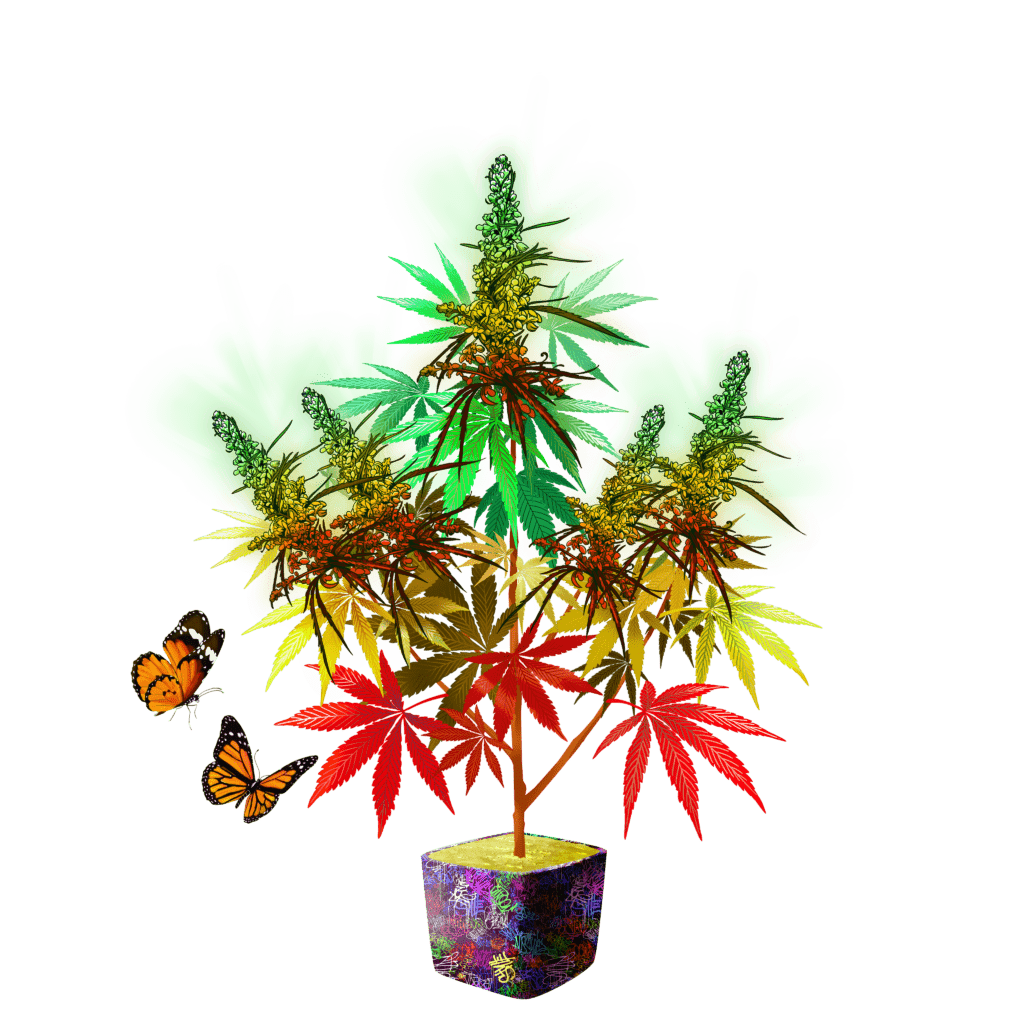In March, 2021, NFTs exploded into mainstream consciousness thanks to a staggering sale on the renowned auction platform Christie’s. The winning bid of $69.3 million for a collage of digital art projects previously published individually online by artist Beeple stunned the world for the singular reason that unlike every other piece of art sold through the legendary auction house, this collage did not exist in the physical world.
NFTs, short for “non-fungible tokens,” are a digital marker akin to crypto currency such as Bitcoin, capable of being transferred between digital wallets. Unlike a crypto currency, the non-fungible aspect means they are each unique, not interchangeable or capable of being divided as one might exchange a dollar for four quarters. The process through which these digital coins are created is identical, however. Simply put, the token is minted by running a complex mathematical calculation generating a unique “hash” which can be added to a blockchain — a decentralized ledger stored across thousands or even millions of individual computers referred to as nodes. The minted token then becomes an indelible part of that ledger, and ownership of the token is recorded on the blockchain, unalterable without the consensus of a majority of these nodes.
While the technology may have risen to prominence because of Bitcoin, NFTs are only possible thanks to the expanded capabilities of a separate blockchain: Ethereum. Unlike Bitcoin, Ethereum allows creators to embed small chunks of code into their minted tokens, often manifesting as hyperlinks to an image, like the one created by Beeple.
The ability to own these digital assets has led to a whirlwind of hype, with celebrities buying into the hot collections and fortunes being made solely on speculation of their value. It seems only natural that this new frontier of digital ownership would intersect with the perpetual nascency of the cannabis industry, where venture capitalists have for years tried to “get in on the ground floor” of an emerging and often poorly regulated market.
“There absolutely exists this very early stage NFT world that’s more like the early stage pump-and-dump cannabis stocks,” says Amanda Reiman, founder and CEO of Personal Plants, a platform aimed at preserving and cultivating entheogenic plant medicines. Reiman has dedicated her life to broadening understanding of plant medicines, working as manager of marijuana law policy for the Drug Policy Alliance and chairing the city of Berkley’s Medical Cannabis Commission, and is now part of a project, ΔFLORA, that will incorporate NFTs into that goal.
Much of the NFT market seems to function similarly to a pyramid scheme, relying on a shared perception that crude, procedurally generated avatars will increase in value in order to lure in new buyers and drive up demand, allowing creators and early adopters to unload their NFTs before the illusion is shattered. Reiman, however, sees potential beyond simply the digital ownership of JPEGs that can be easily saved by any viewer with a simple right click. “NFTs are something that is way beyond just a picture. They’re actually a membership token and proof of ownership,” she explains.
“Of course, there’s the whole issue of whether the NFTs in and of themselves have value,” she says.
“Where I think NFTs can go really well with plant medicine is around building community, because once somebody buys into a community by purchasing an NFT, they’re connected with everybody else who’s also made that investment into that community.”
With ΔFLORA, Reiman envisions a community driven by the dual passions of entheogenic plant medicine and the cultural hype of NFTs, with a higher level of engagement than traditional membership models. A ΔFLORA NFT will hopefully be a cool piece of digital art, but will also grant its owner access to seminars, marketplaces, and digital spaces dedicated to the conservation of entheogenic plants. “It’s really kind of like a ticket into this world full of both in-person and virtual opportunities to not only connect to others in the community but actually live out the passion that’s embodied in that community,” says Reiman.
Tying an NFT to a community — and real-world benefits — is something the Crypto Cannabis Club also hopes to incorporate, says club CEO Ryan Hunter. Launched as a series of 10,000 unique toker avatars in July, the Crypto Cannabis Club has a similar vibe to many other prominent NFT collections, just with a distinctly cannabis flavor.


“The vision for the project is so much more than an NFT collection,” says Hunter. “We are really trying to build a community that goes beyond NFT ownership to bring together the cannabis community both in the real world as well as in the metaverse.”
For the Crypto Cannabis Club, this means building partnerships with cannabis brands to give NFT owners product discounts, as well as creating virtual spaces and in-person events; real-world value beyond a vague sense of ownership recorded on the blockchain.
Of course, there’s money to be made in the sale of cannabis NFTs. The 10,000 NFTs minted by the creators of the Crypto Cannabis Club sold out within a week and are now being re-sold through OpenSea, the secondary marketplace where NFTs are exchanged by their owners for Ether (ETH), the crypto currency endemic to the Ethereum blockchain. Using smart contracts embedded in NFTs, creators can ensure a cut of all future re-sales. Hunter says the Crypto Cannabis Club gets five percent of all sales, which average around .3 ETH, or a little less than $900, per cannabis NFT at the time of this writing.
NFTs are subject to any number of market forces, fluctuating in value according to demand, desirability of the artwork and, perhaps most importantly in this instance, the benefit attached to ownership (although most owners on Twitter seem content with simply possessing an avatar). Like most of the NFTs being traded as de facto assets online, the value of the Crypto Cannabis Club’s 10,000 tokers is perhaps intrinsically tied to the hype around their ownership as much as their actual utility. But while the excitement of digital collectability is not felt by everyone, the real-world benefits of belonging to the club may be.


Hunter joined the Crypto Cannabis Club team in September, working to build relationships with cannabis brands, and although his appointment to CEO is much more recent, he’s able to offer those brands a good deal of insight into the people buying in. According to Hunter, sixty percent of club members purchase cannabis once a month, with forty percent hitting the dispensary weekly. Of that number, more than half spend upward of $150 per visit. “That’s somebody that a brand would want to engage with,” he says.
Environmental impacts of cannabis NFTs
The potential to build a highly engaged community has myriad benefits, but the elephant in the room might be the environmental impact of NFTs, which both Reiman and Hunter see as a particular issue for the demographics they are trying to court with their projects. “It’s absolutely an issue, especially with this community,” says Hunter.
Because of the immense amount of computing power required to add to the blockchain (a process called “proof of work”), creating and trading NFTs requires an immense amount of energy and an associated carbon footprint. The blockchain supporting Bitcoin is a particularly egregious offender in this regard, producing a CO2 footprint estimated to be on par with the country of Kuwait. Ethereum, while slightly less archaic by tech standards isn’t much better, estimated to produce more than 53 mega tons of CO2 annually, equivalent to the entire country of Singapore. A single transaction on the Ethereum blockchain uses roughly the same amount of energy as the average American household does over nine days.
Reiman recognizes this issue and says responsibility lies with NFT creators to offset that contribution to global climate change. Hunter goes further, claiming that the Crypto Cannabis Club is investing some portion of proceeds into purchasing carbon offsets. While the initial run of Crypto Cannabis Club NFTs already exist on the blockchain and therefore cannot be altered, he says future runs will incorporate this promise as part of their smart contract.
The most realistic solution to Ethereum’s high carbon footprint may come from a forthcoming alteration to the way the blockchain itself works. Rather than relying on super-powered CPUs jockeying to create new blocks through proof of work, the system is reportedly switching to a proof of stake model, requiring validators to provide a large amount of ETH as collateral. Among its benefits, the switch should dramatically cut down on the energy required to create tokens, according to most reports.
Even if the environmental impacts can be mitigated and the hurdle of instilling the value of collectibles that do not physically exist can be cleared, the fact remains that the NFT space is rife with fraud. Absent any sort of real-world benefits, NFTs are often presented as investments, holding value that will increase meteorically. As a result, fraud seems to be pervasive in NFT markets, with self-dealing pump-and-dump schemes meant to create the illusion of increasing value in order to enthrall hapless speculators. The $69.3 million sale that catapulted NFTs into the mainstream itself seems to have dubious connections meant to drive up the value of a separate token collection of which Beeple is a partial owner.
NFT scandals and scams
There is also no shortage of anonymous creators promising extended benefits to purchasing an NFT only to disappear, leaving buyers with a digital token of questionable, if any, value.
A recent heist of potentially hundreds of millions of dollars worth of NFTs from users of the OpenSea platform also highlights the issue of NFT theft. While the OpenSea debacle is said to be the result of a phishing scam, cleaning out an unsuspecting user’s wallet is as easy as depositing a token embed with malicious code, as seems to have been done to rapper Waka Flocka Flame and the meme worthy “All my apes gone” incident. Because of the lack of centralized control foundational to the blockchain, victims of these thefts have little recourse for recovering their stolen digital property.
“People want to be involved in something that is very hot and cool, they want to be involved in something that is going to make them a whole lot of money very quickly, and there are people that know this and are going to take advantage of this,” says Reiman. “There will absolutely be people who look at this as an opportunity to take advantage and will go in with the idea that they just want to make as much money as they can as quickly as they can and get out. But that’s not the long-term, just like that wasn’t the long term for the Internet, and that isn’t the long-term for cannabis.”
Both Reiman and Hunter agree that given the amount of shenanigans occurring in the NFT space, new NFT buyers should conduct their due diligence.
“As a new asset class there are lots of folks out there looking to make a quick buck, both legally and illegally, so you need to educate yourself before getting involved in this and approach these types of assets with a healthy dose of skepticism,” warns Hunter.
Reiman suggests that anyone entering the space do so with a clear understanding of why they are doing so; whether that is to support a cause, join a community, receive real-world benefits, the appeal of the attached artwork, or simply on the speculation of future profits. She recommends only buying in if you can see the long-term value and have a genuine desire to see the project grow, as well as doing as much investigation into the existing community through the online spaces where owners of the NFTs congregate. Anonymity is also a red flag, she says, and an NFT project worth buying in to will have visible, accountable creators and a clear roadmap that doesn’t overpromise with fantastical claims.
Whether NFTs can become something more than a passing fad of overhyped get-rich-quick schemes may yet be seen. Fortunes are being made and lost on the mercurial value of these digital tokens, but there are still those who see a broader utility.





